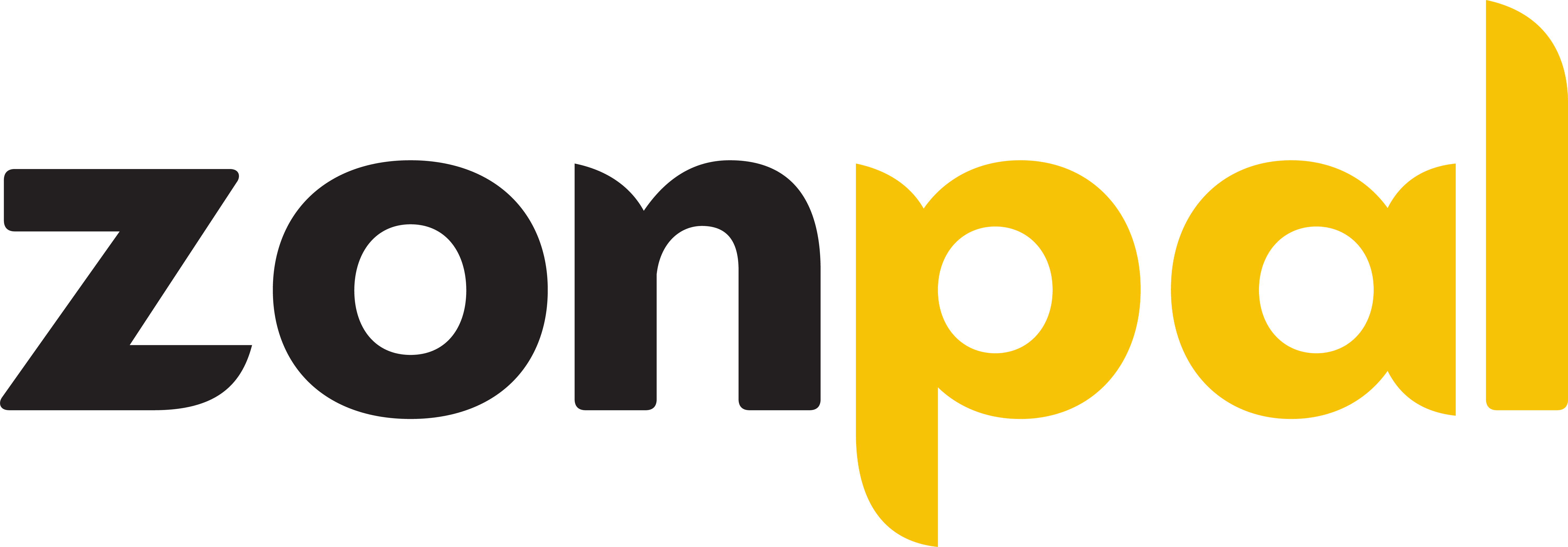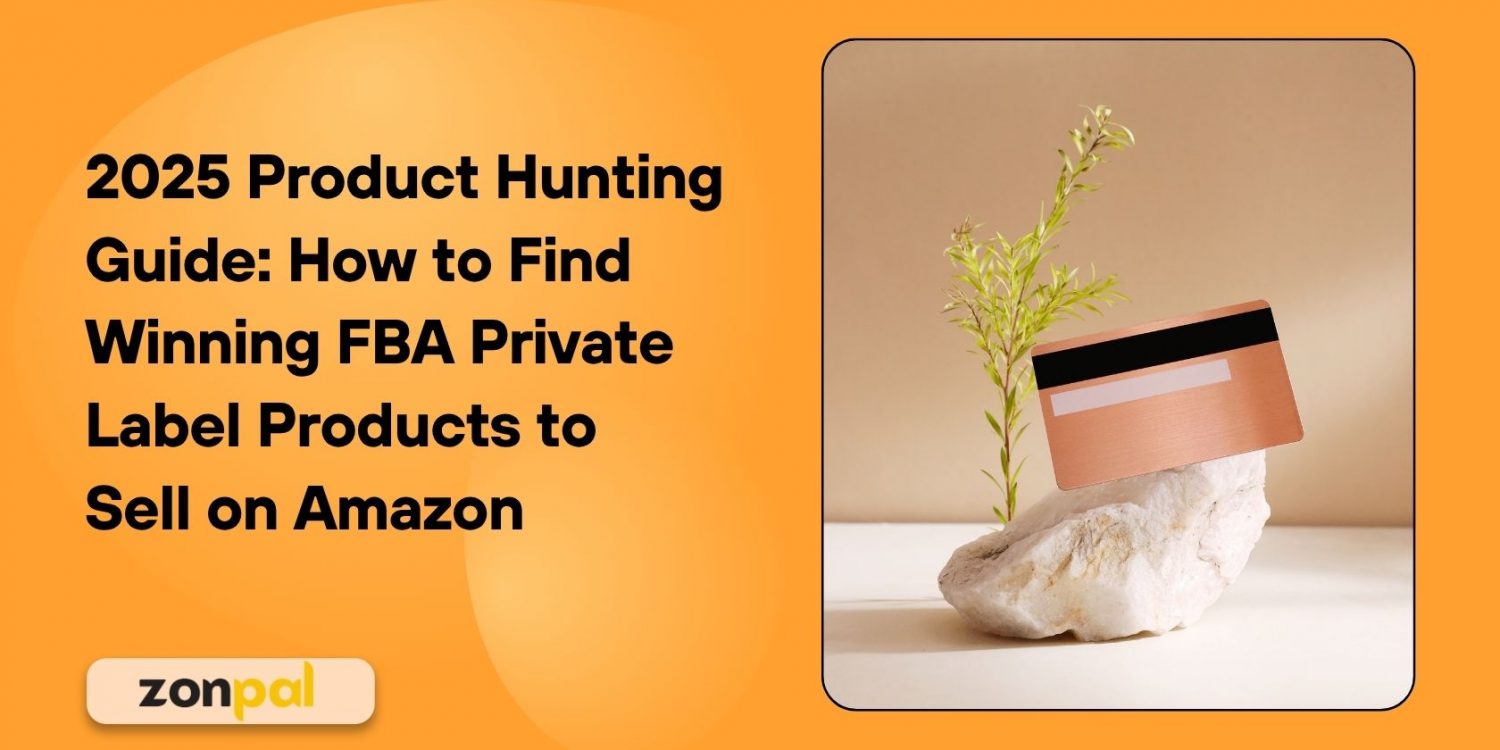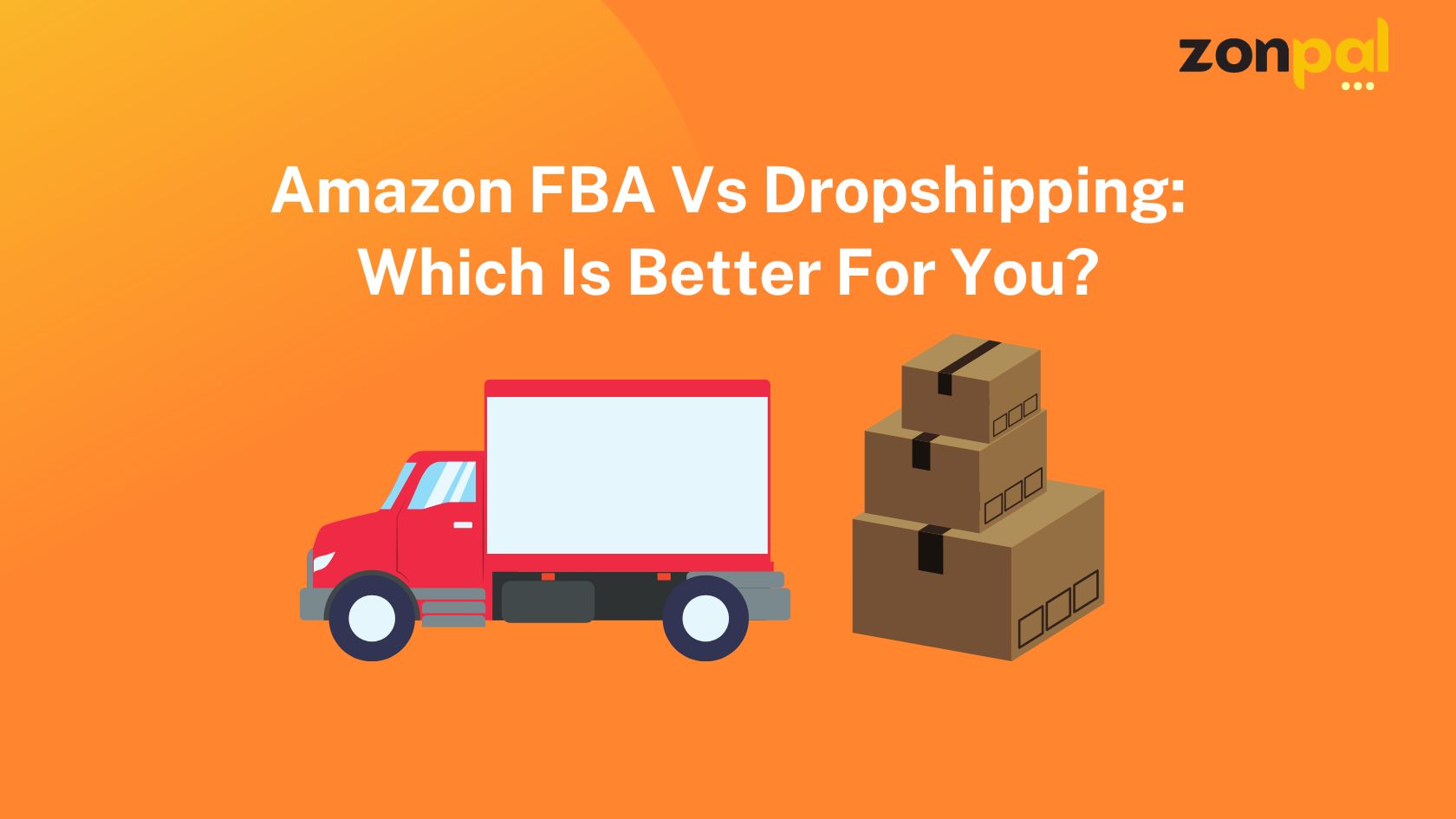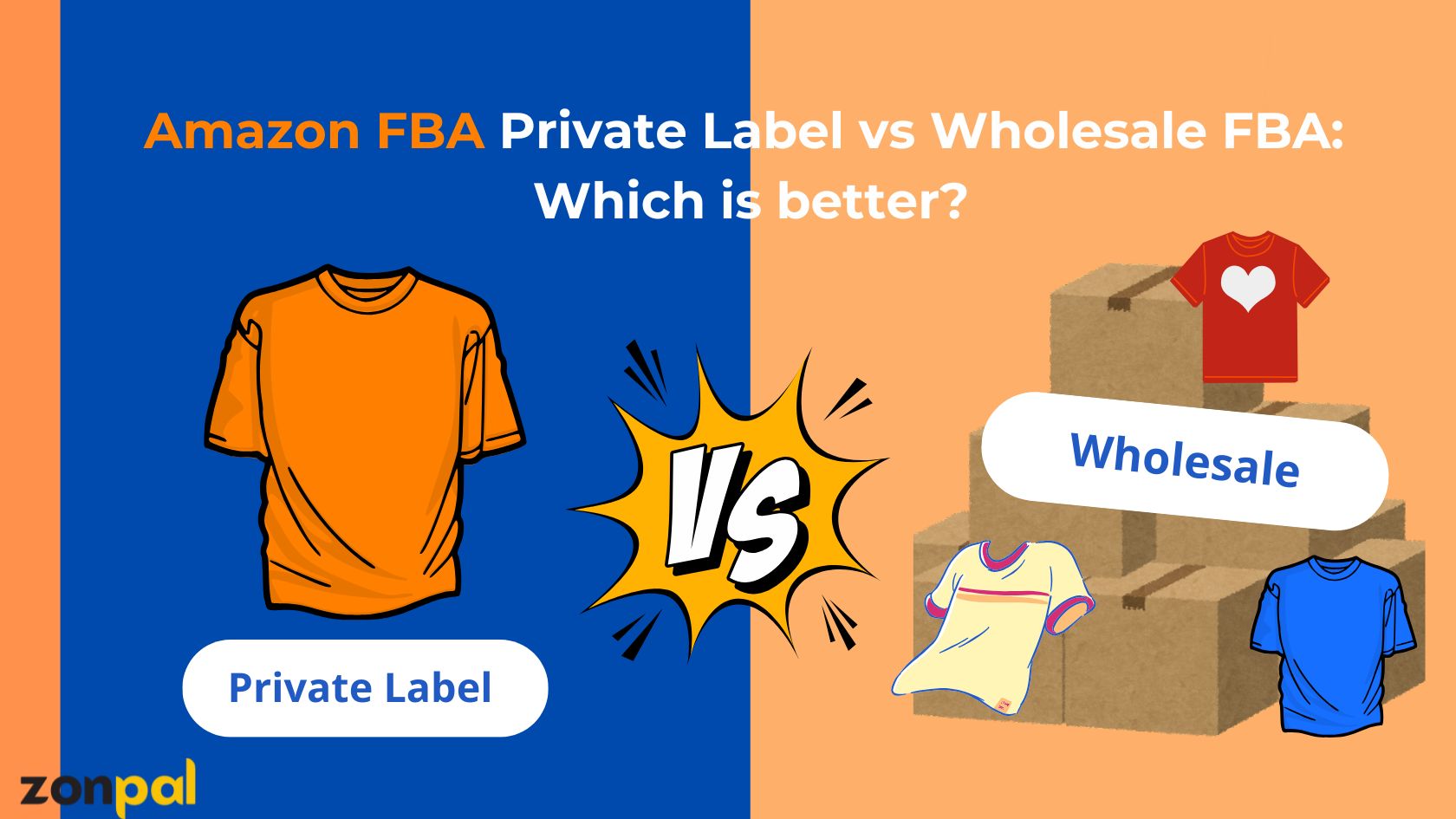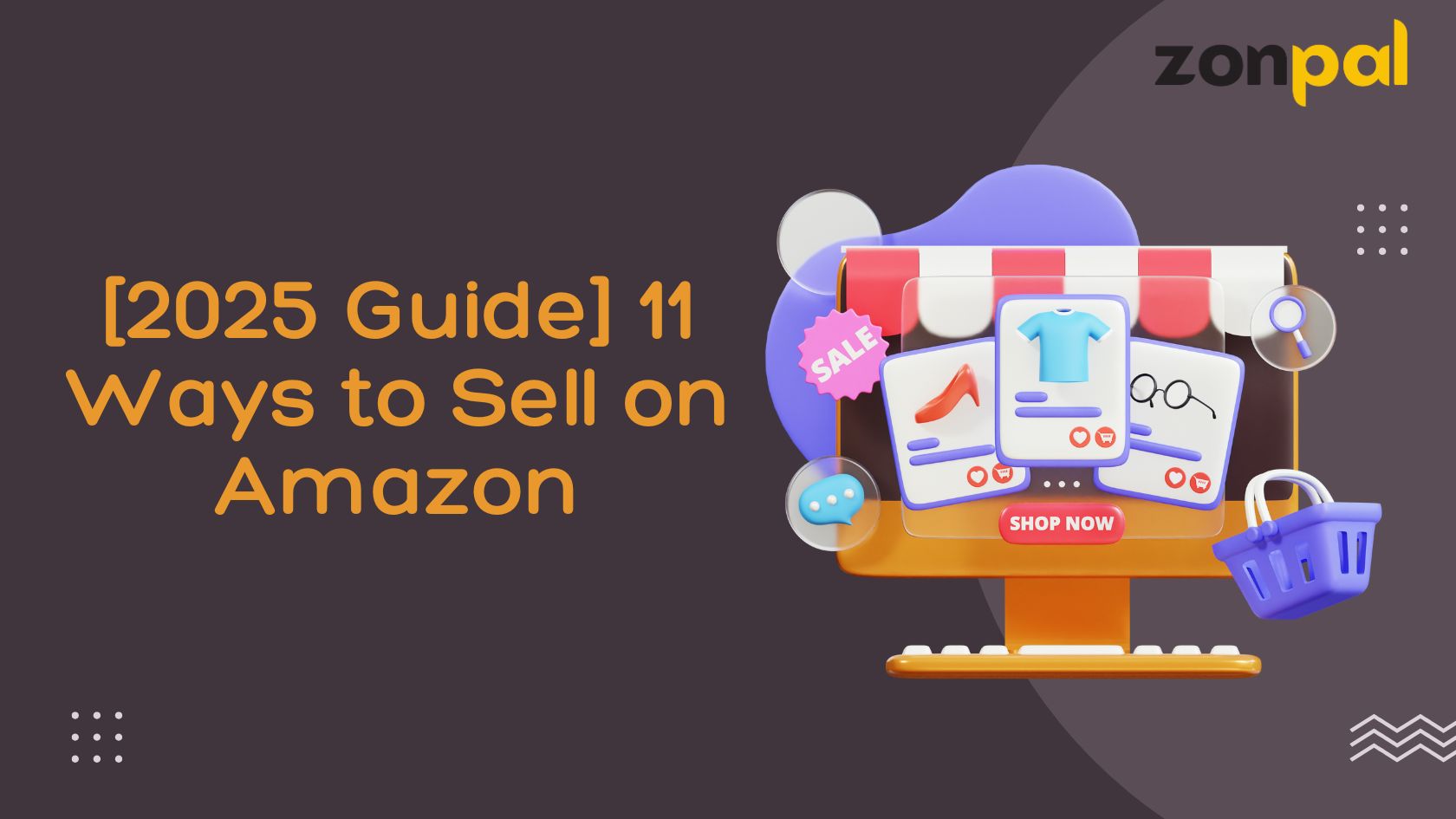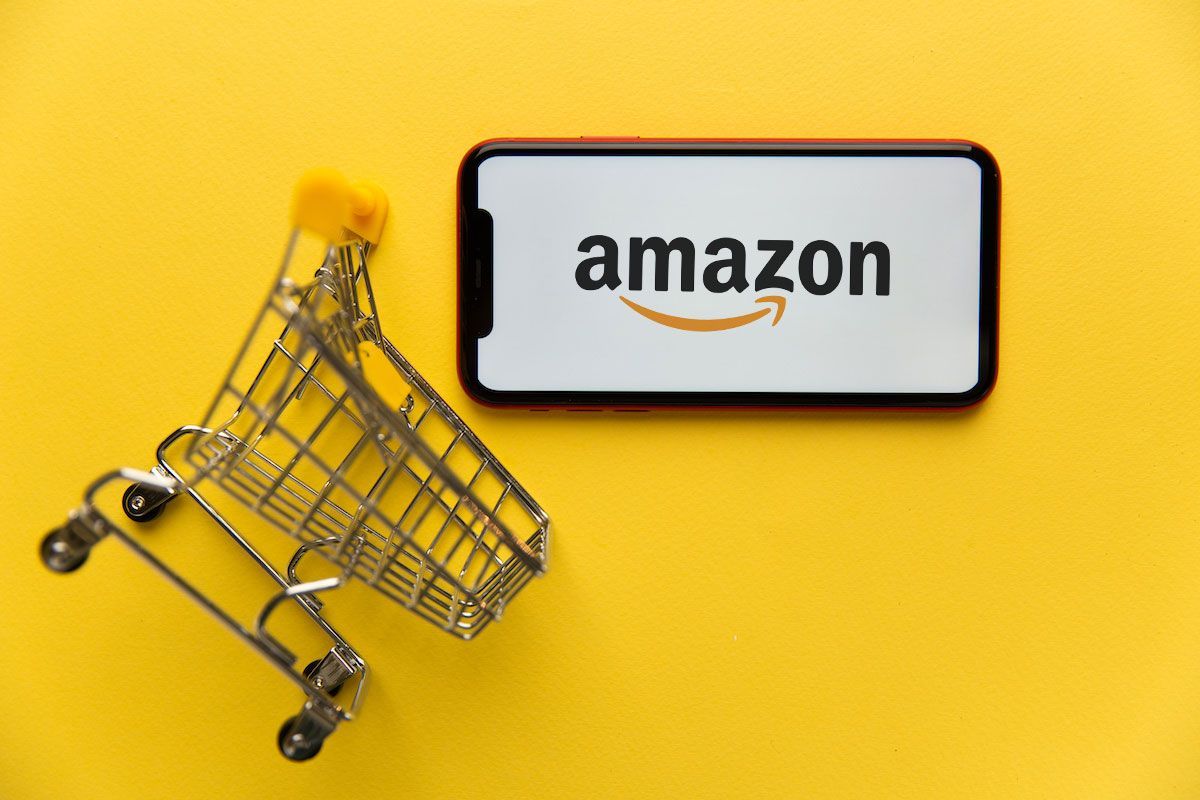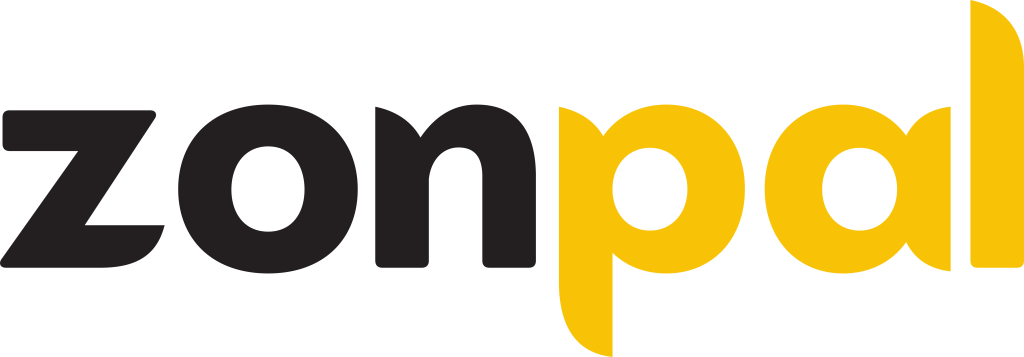2025 Product Hunting Guide: How to Find Winning FBA Private Label Products to Sell on Amazon
The Amazon FBA landscape in 2025 is more competitive than ever, yet it offers immense opportunities for private-label sellers who choose the right products. With global e-commerce sales projected to hit $6 trillion by 2024 (Statista), finding best products to sell on Amazon FBA is critical to stand out.
This guide equips you with proven strategies to identify and source winning FBA private label products to sell on Amazon. From beginner-friendly tips to advanced techniques, we’ll cover criteria, scouting methods, and sourcing options, backed by real-world examples and data.
Identify Winning FBA Private Label Products
Selecting products is the cornerstone of a successful Amazon FBA business. So what are the ideal products to sell private labels? This section from Zonpal outlines 10 essential criteria to ensure your private-label products are profitable, sustainable, and competitive in 2025.
- Demand & Competition
From our experience researching and launching FBA products, strong market demand is one of the most important success factors. A high-demand product can drive consistent sales—but only if it’s not in an oversaturated niche.
We recommend targeting items with a Best Seller Rank (BSR) under 50,000, which usually indicates at least 300 sales per month. You can use tools like Helium 10’s Xray to confirm demand and ensure fewer than three competitors dominate the niche.
- Product Size
Small, lightweight products minimize shipping and FBA storage fees. Lightweight products consistently outperform heavier ones, as lower fees boost margins and simplify logistics. You can aim for items under 8 11/16″ x 5 7/16″ x 1 3/4″ and 1–2 pounds.
- Seasonality
Evergreen products ensure yearly sales, avoiding seasonal slumps like Christmas decorations post-December. We prioritize evergreen products to prevent dead inventory and ensure predictable cash flow. You can use Keepa to check historical sales trends for stability.
- IP Safe
Intellectual property (IP) safety is critical to avoid legal disputes. It’s better than ensuring products are free of patents or trademark violations using the USPTO database or Helium 10’s X-ray. So customizations, like unique packaging, often bypass IP risks, a strategy we’ve found effective for building defensible brands.
- Durability & Safety
Choose non-fragile, non-electric, and non-hazardous products to reduce returns and comply with Amazon’s safety standards. You need to avoid glassware, lithium batteries, or flammable items. Durable, safe products will simplify logistics and enhance customer trust, which we consider essential for long-term success.
- Simplicity
Products with fewer parts make manufacturing easier and lower customer complaints. Complex items, like multipart fitness kits, often get bad reviews. There is no specific report to prove this. However, our experience shows that single-piece products get better ratings. This is true compared to items that need assembly.
- Regulatory Friendly
Avoid food-related or direct health-related products requiring FDA approval, such as supplements or medical devices. It’s better that you focus on categories like home goods to sidestep regulatory hurdles.
- Pricing Sweet Spot
Price products between $20 and $50 to balance affordability and profitability after FBA fees ($5–$8). We found that $25–$35 products, like insulated lunch bags, drive high conversions. Test prices within 10% of competitors using Keepa, a tactic we’ve used to optimize sales without sacrificing margins.
- Profit Potential
Aim for a minimum gross profit of $5, with a gross margin of 30%+ and ROI of 100%+. For a $25 product, keep the cost of goods sold (COGS) below $12. We recommend using Amazon’s FBA Calculator to validate profitability.
- Customization
Customization differentiates is an easy way to craft your private label brand. You can add unique features, like eco-friendly materials or branded packaging. Customization brand loyalty, turning one-time buyers into repeat customers.
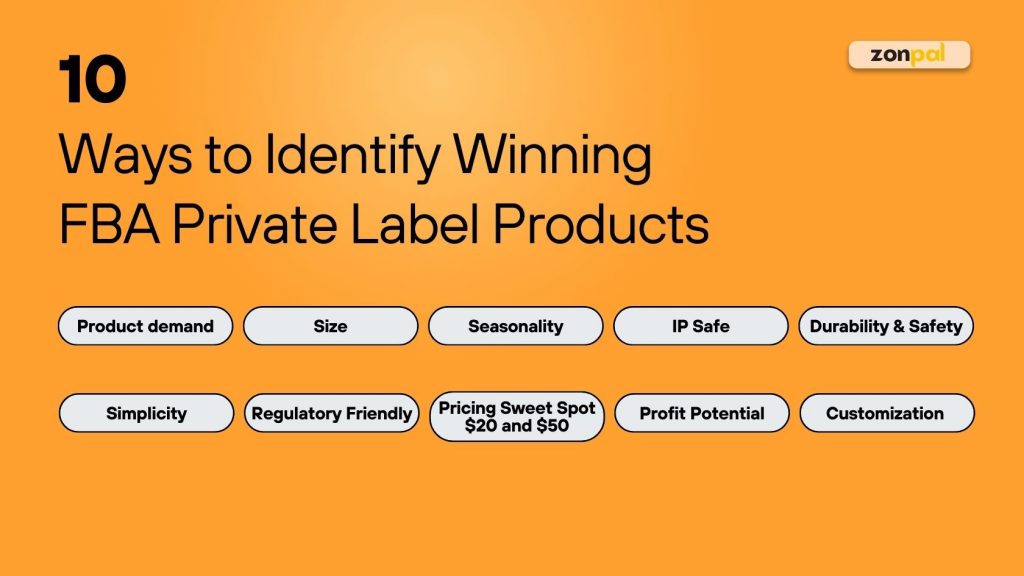
10 ways to identify winning FBA private label products
How To Scout Winning FBA Private Label Products To Sell On Amazon
Effective product scouting blends data-driven research with trend-spotting creativity. We present six proven methods to uncover high-potential private-label products, suitable for beginners and seasoned sellers.
Method 1: Manually scout directly on Amazon by browsing through categories
Manual scouting uses Amazon’s ecosystem to find products without special tools. You can explore Best Sellers, Hot New Releases, or categories like Home & Kitchen > Kitchen & Dining. Filter for products priced between $20 and $50, with a Best Seller Rank (BSR) below 50,000 and fewer than 100 reviews.
This free method helps you understand the market but takes time. We recommend spending 1 to 2 hours each week to find hidden niches.
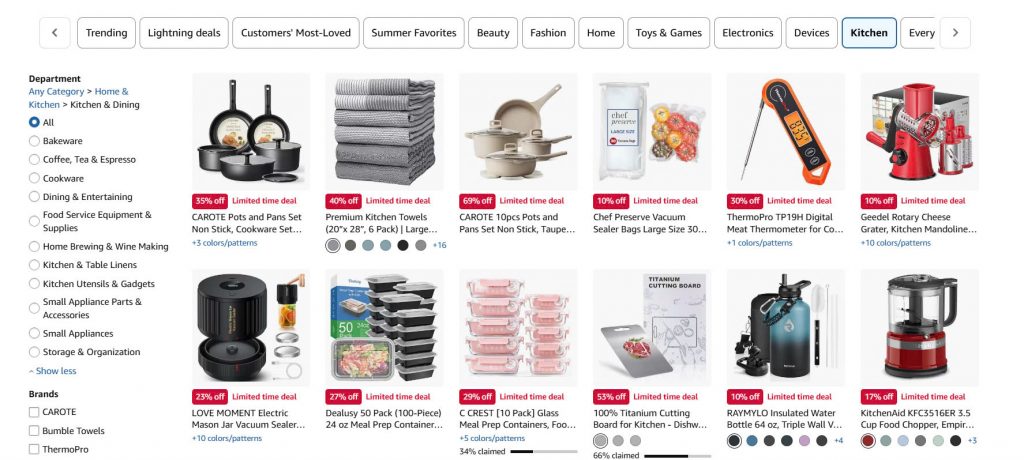
Manually scout directly on Amazon by browsing through categories
Method 2: Using Helium10 & Jungle Scout tools
Tools like Helium 10 and Jungle Scout deliver data-driven insights for efficient scouting. When you use these tools, you can analyze Amazon search results, filtering for price ($20–$50), BSR (<50,000), reviews (<100), and weight (<2 lbs). Jungle Scout’s Opportunity Finder targets niches with 300+ monthly sales and low competition (LQS 5–7). Validate with Keepa for non-seasonal demand.
How to use Helium 10 for effective product research
One of the key skills that every successful Amazon FBA seller needs to develop is the ability to spot the right product at the right time. That’s where Helium 10 comes in—a leading all-in-one software suite designed specifically for Amazon sellers.
Among its many tools, Black Box is the go-to feature for product discovery. Think of it as a smart search engine that scans through Amazon’s massive catalogue based on the criteria you set.
You can filter products by essential metrics like:
- Estimated monthly revenue
- Number of reviews
- Star ratings
- Price range
When starting, you should focus on products within the $20–$50 price range. This is often considered the impulse-buy sweet spot, making it easier to convert browsers into buyers.
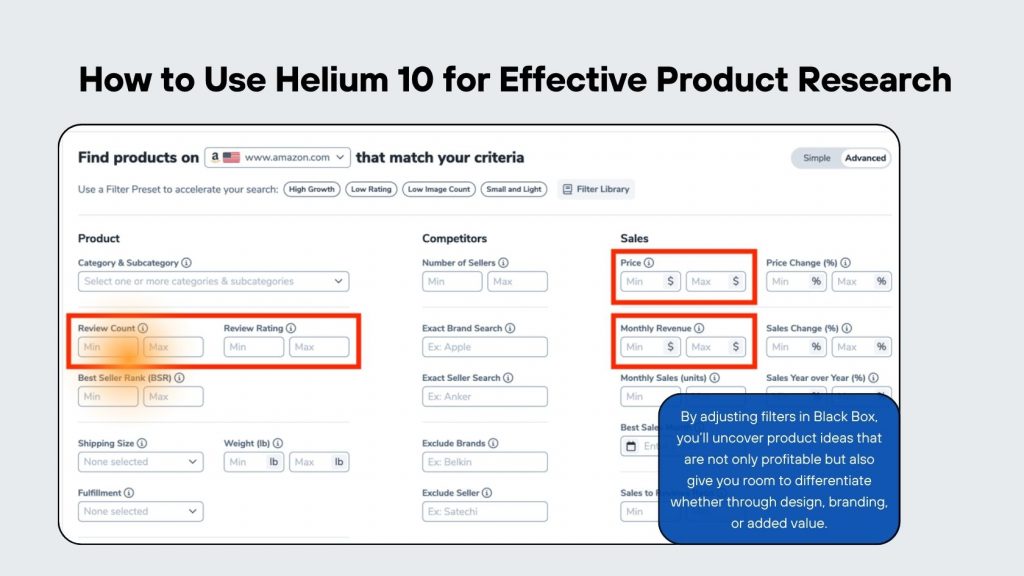
How to use Helium 10 for product research
How to use Jungle Scout for effective product research
Jungle Scout operates on the same core principle as Helium 10: helping sellers discover high-potential products based on real Amazon data. While the tools may feel similar in function, Jungle Scout’s interface is more simplified—making it especially beginner-friendly.
To make the most out of Jungle Scout’s Product Database, start by applying strategic filters to narrow down your search. Try this reliable strategy to identify winning product opportunities:
- Category Selection:
Avoid high-risk or overly competitive categories when starting out. Uncheck options like Electronics, Grocery, Software, Cameras, Clothing. Focus on broader, evergreen categories that offer more room for new sellers.
- Star Rating Limit:
Set the maximum star rating to 3 stars. This helps identify products with room for improvement—an opportunity to stand out with better quality, branding, or customer service.
- Review Count Filter:
Set the review limit to no more than 100. This helps you avoid saturated listings and find niches where you won’t compete with long-established sellers with thousands of reviews.
- Price Range:
Aim for products priced between $20 and $50. This range often hits the sweet spot between affordability for buyers and decent profit margins for sellers.
- Seller Type:
Make sure to include both FBA and FBM in your seller type selection. This will give you a broader picture of how different fulfillment models are performing within your chosen niche.
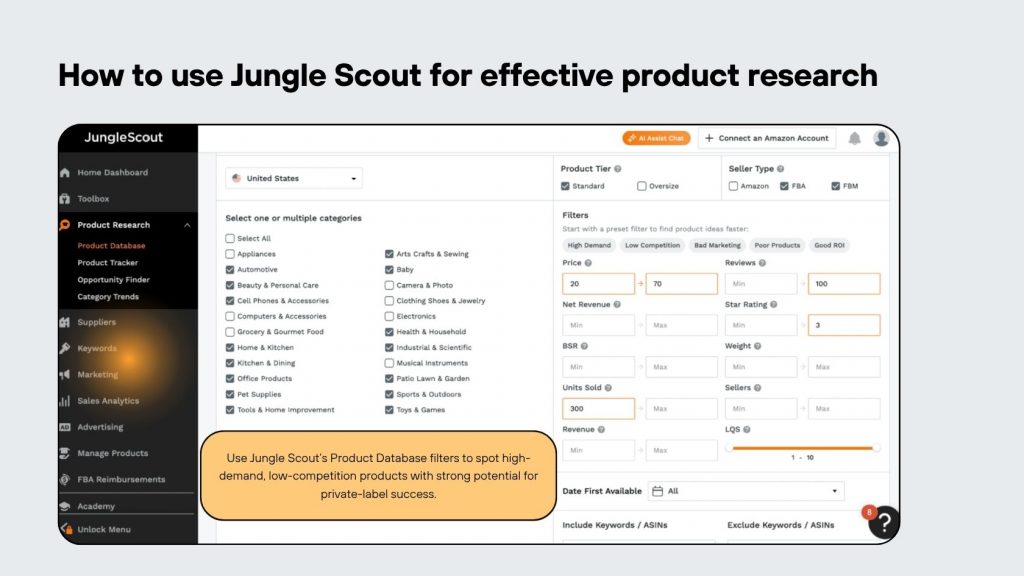
How to use JungleScout for effective product research
Once you’ve applied these filters, Jungle Scout will return a refined list of products that match your criteria. From there, you can dig deeper into sales trends, profit potential, and competition—giving you the data you need to make smart product decisions.
Method 3: Leverage social media and Google Trends for emerging niches
Social media and Google Trends are powerful tools for spotting trending products ripe for private labeling. This method works well because platforms like TikTok and Instagram show real-time consumer interests. Hashtags like #KitchenGadgets or #EcoFriendly highlights niche products before they fill up Amazon.
Google Trends confirms non-seasonal demand, ensuring year-round sales potential.
Here’s how to use it to find the best products to sell on Amazon FBA: Search for trending hashtags on TikTok and Instagram to find popular products. Then, check Google Trends to see if interest has stayed steady over time. Cross-check Amazon for BSR <50,000 and >300 sales to ensure there has demand for that product.
This free method excels at catching trends early, though validation is crucial to avoid fleeting fads. We love how social media reveals what consumers want, which data alone can miss. This makes it great for finding products to sell on Amazon.
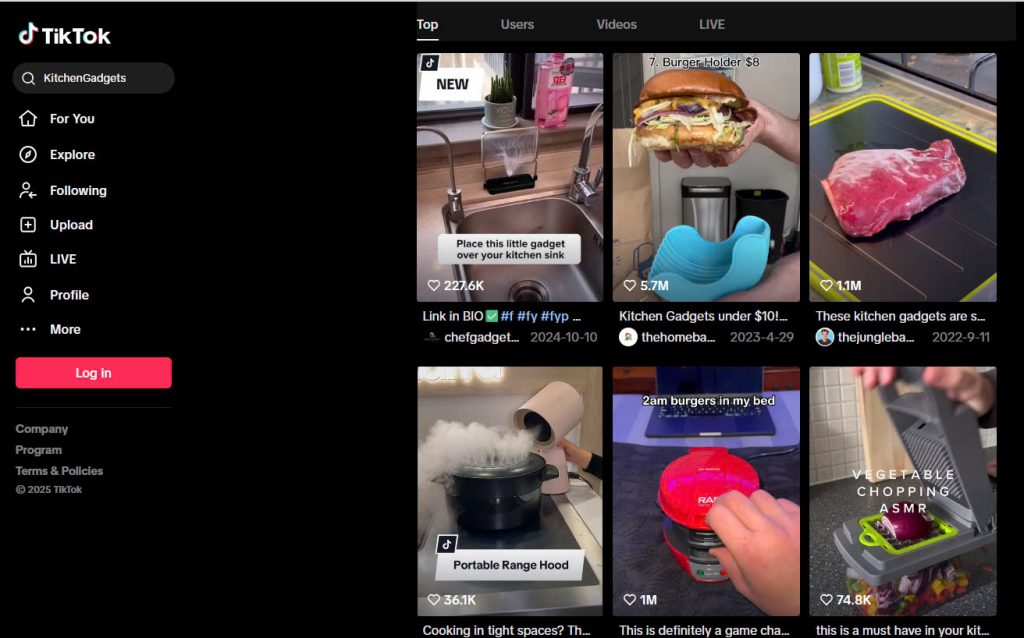
Finding Amazon product ideas on TikTok
Method 4: Explore consumer trend insights from free reports
Free industry reports provide a macro view of consumer trends for private label ideas. We suggest following reports from Jungle Scout, AMZScout, or Google for non-seasonal, customizable products. While this approach requires more time, it aligns well with the growing sustainability trends — a shift we believe will be transformative.
Method 5: Source unique ideas from global B2B platforms
Have you been thinking about this method? Global B2B platforms like Alibaba and Global Sources uncover customizable products not yet saturated on Amazon. Search for lightweight items (e.g., “silicone kitchen gadgets”), filtering for low MOQs (50–100 units) and customization options. Next, you validate on Amazon for <100 reviews and BSR <50,000.
Supplier vetting is key and this method helps you find untapped niches. We always request samples to avoid quality issues, a practice that’s saved us from costly errors.
Method 6: Explore other E-commerce marketplaces for untapped products
Sometimes, rival platforms are the key to uncovering hidden gems for private labeling. Platforms like Etsy, ebay, and Walmart reveal niche products ideal for private labeling. You can begin by looking at popular categories, like handmade home decor. Focus on items priced between $20 and $50 that sell well but have little presence on Amazon.
And don’t forget to cross-check Amazon for BSR <50,000 and >300 sales per month. Although this method requires manual research but excels at finding creative niches. We find it invaluable for uncovering products mainstream sellers overlook.
Where To Source FBA Private Label Products
Finding items to sell on Amazon starts with sourcing from reliable suppliers to ensure your private label products meet quality and profitability goals. Below, we explore five trusted avenues to source products tailored for Amazon FBA.
Trade shows
Trade shows like Canton Fair (China), Global Sources Exhibitions (Hong Kong), and ASD Market Week (USA) connect you directly with manufacturers for face-to-face negotiations. Travel costs are a drawback, but inspecting samples and building relationships are unmatched. We recommend attending with a product brief to streamline discussions and maximize value.
B2B platforms, e.g 1688, Alibaba, Thomasnet
B2B platforms open doors to expansive supplier networks, making them a cornerstone for sourcing private-label products. Alibaba is known for its Trade Assurance program.
It also offers customization options, like logo engraving. This is great for electronics and home goods. For better deals, try 1688, Alibaba’s platform for China. It has lower prices, but you will need translation tools to use it.
Meanwhile, Thomasnet connects you with North American suppliers, ideal for leather goods with faster shipping. To ensure quality, always vet suppliers by requesting samples and reviewing feedback. We rely on these platforms for their diverse offerings and low MOQs, but staying vigilant about quality control is essential for success.
Sourcing agents and consultants
Sourcing agents in places like China, Vietnam, and India can change your private-label journey. They make negotiations easier and help ensure quality.
Trusted firms, such as EJET Sourcing in China or Cosmo Sourcing in Vietnam, excel at connecting you with reliable suppliers. You can find agents on Upwork or through special firms.
Look for lightweight products that cost $10 or less. These products should have options for customization, like unique colors or branded logos. This will help you create standout private-label items.
Regional manufacturing hubs
Emerging markets like Vietnam, India, and Mexico offer cost savings and unique products. Use directories like IndiaMART to connect with manufacturers. A seller we worked with sourced handwoven baskets from Vietnam, branded as eco-friendly, and hit 100 daily sales.
These hubs have lower labour costs than China and fewer tariff issues, but logistics can be complex. We recommend using freight forwarders such as Amazon Global Logistics. This can make shipping easier and support the trend of diversified sourcing in 2025.
Online supplier directories
Online supplier directories provide access to trusted suppliers. They are great for finding unique private-label products. Global Sources is great for electronics. Made-in-China has low minimum order quantities for flexible orders. IndiaMART is best for textiles and jewellery.
Start by searching for non-fragile, lightweight products, then request quotes and samples to ensure quality. These platforms often tie into trade shows, boosting supplier credibility. While language barriers can arise, their diverse offerings make them a favourite of ours for uncovering niche products.
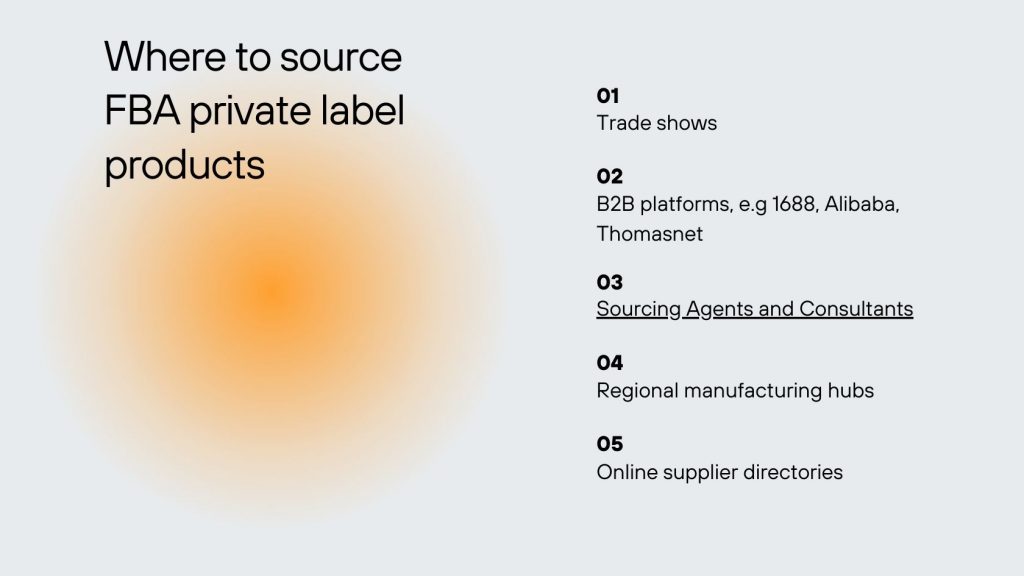
Where to source FBA private label products?
Case Study from Jungle Scout: Jungle Slider – Choosing the Right Private Label Product and Generating Over $750,000 in Sales
In the fast-paced Amazon FBA market, selecting the right private-label product is critical for success. A standout example is the Jungle Slider, a bamboo kitchen tool featured in Episode 18 of Jungle Scout’s Million Dollar Case Study series (Jungle Scout, 2020). In just one season, this product brought in over $750,000 in revenue—an impressive milestone that brought the team close to their $1 million target. Its performance underscores the value of strategic product selection.
Today, however, Zonpal will take a fresh look at this case study through the lens of what makes it one of the best products to sell on Amazon FBA. By analyzing its core success factors, we’ll uncover practical insights you can apply to your product research strategy.
What strategies did they use?
The team began with manual scouting on Amazon, browsing categories like Home & Kitchen to identify high-potential, underserved niches. They spotted the opportunity for bamboo kitchen tools—a growing trend driven by sustainability and simplicity.
The Jungle Slider meets most of the requirements. It has low competition and steady demand. It is lightweight and non-electric. Its price is between $20 and $30.
They didn’t stop at instinct. They used Jungle Scout’s tools to check their idea. They looked for the Best Seller Rank (BSR) under 50,000, fewer than 100 reviews, and good monthly sales. Everything aligned.
They used a classic Alibaba-style method for sourcing. They partnered with a manufacturer in China and completed three rounds of prototyping.
This iterative development ensured the product met actual customer needs. We improved our product by looking at competitor reviews. This is what we call customer-driven innovation. Rather than guessing what customers wanted, they let the market feedback shape the product improvements.
Why does this case stand out?
Most importantly, the team didn’t just identify a good product. They executed across every phase—from research and sourcing to branding and advertising. After launching, they stopped all promotional giveaways and coupons, yet still averaged over 15 sales per day. That’s a strong signal of genuine product-market fit.
They also managed advertising costs well. Initially, they encountered a PPC ACoS (Advertising Cost of Sales) over 100%, which is expected early on. But through optimization, they brought it down to 50%, improving margins significantly.
They also tested listing parts like titles, images, and prices to increase conversions. This shows how ongoing optimization leads to long-term success.
Key takeaways for new sellers
If you’re just starting your FBA journey, this case study offers actionable lessons you can apply:
- Start with the data: Use manual browsing to develop product ideas, then validate them with tools like Jungle Scout or Helium 10.
- Choose simple products: Lightweight, durable, and easy to ship will make your FBA logistics far easier.
- Listen to customer reviews: They tell you exactly what needs to be fixed or improved. That’s your product roadmap.
- Customize smartly: Add meaningful differentiators—better packaging, eco-friendly materials, small improvements that matter.
- Work closely with your supplier: Take the time to develop and test prototypes so you launch the best possible version of your product.
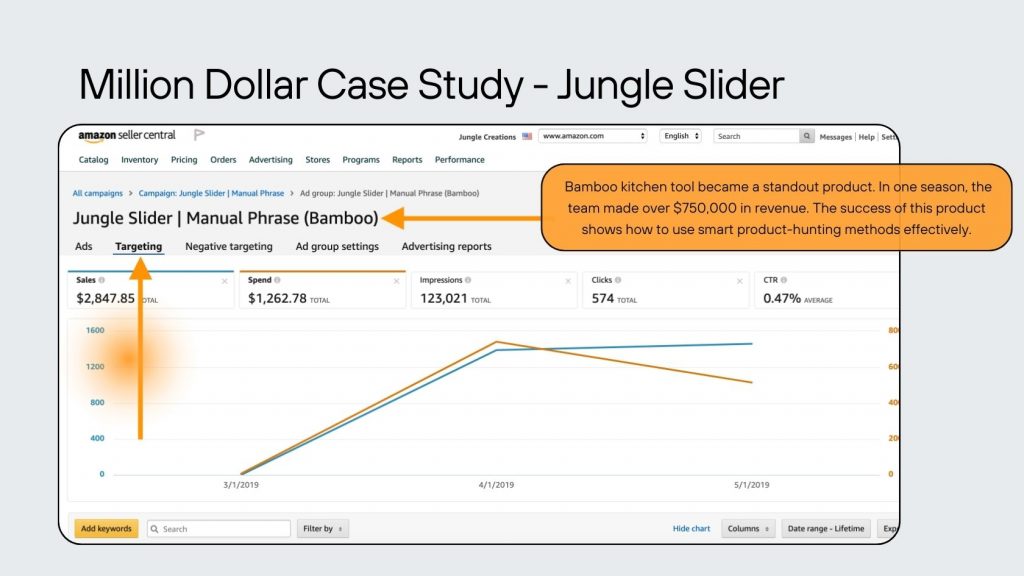
Million dollar case study from Jungle Slider
This case proves that choosing the right product isn’t about luck—it’s about process. With a solid strategy, even a humble kitchen gadget can become a $750,000+ business.
Conclusion
Mastering product hunting in 2025 is your gateway to thriving in Amazon’s competitive FBA marketplace. Our complete guide covers ten important criteria, six scouting methods, and five sourcing strategies.
It helps you find and source winning products to sell on Amazon FBA. You can target popular, low-competition niches like insulated lunch bags. Use tools like Helium 10 and Jungle Scout. These strategies, supported by industry insights, help you create a unique brand.
Our advice? Start with one scouting method, like checking Amazon’s Best Sellers. This week, try a sourcing option like Alibaba. Track metrics like BSR and reviews to refine your approach, and prioritize customization to differentiate your products. As your business grows, adapt to 2025 trends like sustainability and diversified sourcing to stay ahead. For tailored support, choose our FBA Product Sourcing and FBA Product Research services to consult on supplier vetting, product selection, and scaling strategies — personalized to fit your brand goals. We’re here to guide you toward a profitable, scalable private-label empire.
